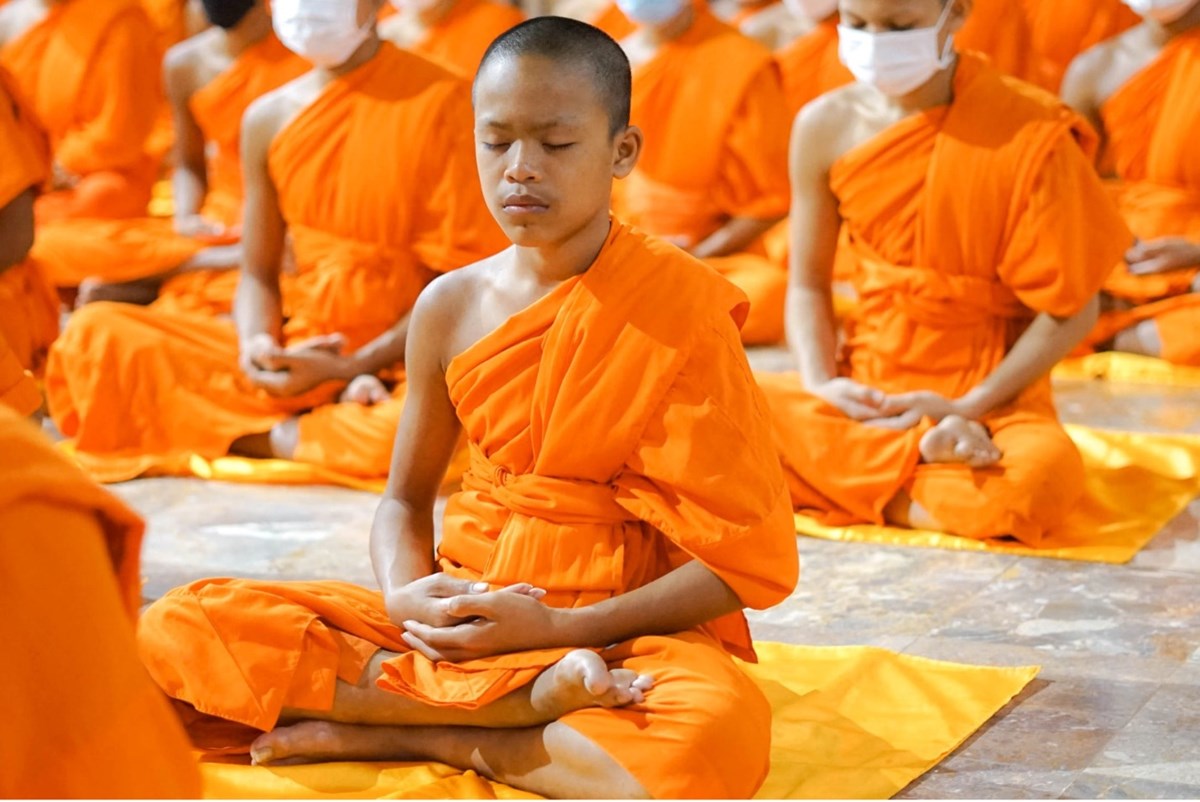By Lay Lon

The photo taken in December 2021 shows novice monk Sarom Nhor practicing daily meditation at his residing Varin Prek Leab monastery, Phnom Penh, Cambodia.
Introduction
Transforming from a 12-year-old farmer boy into a monastic student and then a novice monk is my unforgettable memory. I have been interested in writing about Buddhism in Cambodia since I enrolled in a bachelor of art program in Phnom Penh to study Buddhist philosophy almost a decade ago. My background and life experiences inspired me to pen a journalistic piece titled "Buddhism Helps Poor Cambodian Children to Have an Education." It is the last project for the Spring 2021 "Feature Writing" class taught by Sandra Miller in the English Department.
The assignment called for interviewing at least three sources. Because of Covid-19, people were required to practice social distancing. Therefore, only remote interviews were possible with my five target interviewees. I also found official data from the government and relevant institutions.
The interviewees, who came from poor families, were grateful to Buddhist monasteries for educating them and providing them with opportunities they would not otherwise have. Research shows that Buddhism plays an essential role in developing spirituality and reducing illiteracy and poverty in Cambodia. Thousands of Buddhist monasteries have provided shelters for thousands of countryside boys to become well-educated people.
Buddhism is the state religion and is referenced in the motto of the Kingdom of Cambodia" instead of "Buddhism has been in Cambodia for almost two thousand years. It is the state religion and is referenced in the motto of the Kingdom of Cambodia: “Nation, Religion, King.” Monasteries and monks have played essential roles in society. According to the Ministry of Religions and Cults (MRC), Cambodia had 5,045 monasteries in 2020, respectively. In 2019, Cambodia had a population of about 16 million people; the MRC explains that 71,610 were Buddhist monks.
Buddhist temples in Cambodia are the homes of Buddhist monks and the warmest places for homeless people and unprivileged students. The monasteries near closed schools have hundreds of needy students living in them.
Botumvatey monastery, for example, is not only a welcoming place for Ven. Sib and the other thousand monks continuing their education, but also thousands of poor students from all provinces, called monastic boys.
In 2020, 284 monks and 361 monastic boys lived in Botumvatey monastery, according to Botumvatey monastery’s Annual Report 2020.
In Cambodia, the monks have also operated non-profit organizations to minimize illiteracy and poverty. Life and Hope Association (LHA) is a non-profit organization established by the monks in 2005 of Damnak monastery, Siem Reap, Cambodia.
Program Advancing Girls’ Education (PAGE) is one of the LHA’s active projects that works to rescue younger girls in the province to reach the university level. Another running project is called Park Hyatt Siem Reap & LHA Sewing School (STS). It works to provide sewing skills to underprivileged girls.
In this text for CANAL, I am presenting the interviews that I conducted in the original Khmer. I also am providing summaries of their contents, in English, so that they can be read by a larger audience.
Biographical Statement - Lay Lon
My name is Lay Lon. I was born in Takeo province, a southern part of Cambodia. My farmer parents did not want me dropping school like most boys and girls in the village, although they could not support my schooling. When I was twelve and finished my 6th grade, they sent me to live in a Buddhist monastery to continue my studies.
Living in the temple for 15 years provided me the opportunity to graduate with a Bachelor of Science in Environmental Science from the Paññāsāstra University of Cambodia in December 2018 and a Bachelor of Art in Buddhist Philosophy from Preah Sihanouk Raja Buddhist University in December 2019 in Phnom Penh, Cambodia.
Currently, I am a senior in the Department of English at the University of Massachusetts Lowell, Massachusetts, the United States. My concentration is Journalism and Professional Writing, and my special interest is in social and environmental issues. After graduation, my goal is to return home, work in the community, and continue writing.





